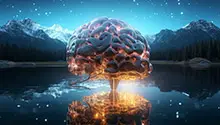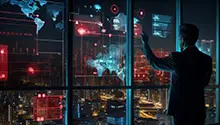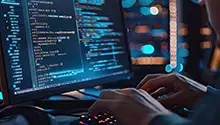In today’s world, AI image generation applications are rapidly exploding and transforming the way we create things. Today, with text-to-image generator tools, some applications can create realistic and specific images from simple text prompts. The application of this is enormous, so even choosing the best AI image generator depends on one’s needs. In this article, we’ll be exploring five flagship AI image generation model, and each of these AI image generators will be going through a different series of tasks to uncover their strengths and limitations. So, whether you are a developer, artist, or creative designer, finding the best image generator with the optimal balance of quality, speed, and API cost is important for transforming creativity into results.
Table of Contents
Why Choosing the Right AI Image Generation Model Matters?
Even though the image generation field is rapidly evolving and we can find some new models and updates every day. But not all image generators are created equal. Each model has its strengths, weaknesses, and ideal use cases. Some focus on raw photo-realism, others on speed or creative style. In practice, when evaluating the tool, the choice of model is often based on parameters such as cost or ecosystem. As much as raw quality.
For example, if you are producing highly stylized fantasy artwork, then one tool might offer benefits. If you are producing a crisp technical diagram, then another might be better suited. Knowing which AI fits your project will save you a lot of time in trial and error and exponentially improve your productivity.
Overview of the Text-to-Image AI Models Compared
In this article, we have compared our tasks on five of the leading AI models. These are:

GPT-4o (OpenAI)
A multimodal model (one of the latest in the GPT-4 series) that builds images from text and images as well. It brings together powerful applications of language with image generation.
API Pricing: $10.00/1M input tokens & $40.00/1M output tokens.
Also Read: 10 Image Generation Prompts to Try Out on GPT-4o
Flux (Leonardo.AI)
Flux is a suite of image models (like Flux Schnell, Flux Dev, Flux Pro) that are fast and flexible. It can create images at wrap speed with Flux Schnell, and with extremely detailed also with Flux Dev/Pro.
API Pricing: Comes with four plans:
- Basic: $9/month with 3500 api credits
- Standard: $49/month with 25000 api credits
- Pro: $299/month with 200,000 credits
- Custom: Custom API credits amount
Also Read: How to Run the Flux Model on 8GB GPU RAM
Phoenix 1.0 (Leonardo.AI)
Phoenix 1.0 is Leonardo’s new base model for high visual experience. Along with the advanced image generation, the model also provides advanced image-guidance capabilities like faithful prompt following and creative control.
API Pricing: Comes with four plans:
- Basic: $9/month with 3500 api credits
- Standard: $49/month with 25000 api credits
- Pro: $299/month with 200,000 credits
- Custom: Custom API credits amount
Adobe Firefly
Adobe’s AI image generator is designed for creative professionals with integrated Photoshop and Creative Cloud support, and has numerous different art styles. It can create nearly anything from realistic photographs to fantasy-style illustrations with a simple interface.
API Pricing: Comes with three plans:
- Standard: $9.99/month with 2,000 generative credits.
- Pro: $29.99/month with 7,000 generative credits.
- Premium: $199.99/month with 50,000 generative credits.
Also Read: How to Use Adobe Firefly Image 3
Imagen 4-Ultra
Imagen 4 is the latest addition to Gemini image generation models. It excels in providing fine details and giving a realistic touch to the image. It also powers its image capabilities in Google products like Slides and Gemini Advance, making it ideal for tasks with high accuracy.
API Pricing: Available in Gemini API Tier 1, 2, and 3 Plans with a cost of $0.06/image
So, each tool is different and has some strengths and weaknesses. In the next sections, we’ll look into their functions and output on metrics, and then compare the outputs of each of these for the specific task.
Evaluation Metrics
In this section, to ensure fairness, we’ll check the outcomes of the models, i.e, generated images, along with the following metrics parameters.
- Customization Options: Does the model allow customization further once the image has been generated by giving further modifications in the prompt?
- API Access & Pricing: Does the model have the api support so that the developers can integrate it within their project workflow? If “Yes”, then what is the api pricing per million tokens?
- Formatting Capabilities: Does the api also support multi-panel layouts and embedded text?
- Aspect Ratio Support: Can we select or set the image aspect ratio and dimensions that we want to generate?
- Platform Compatibility: Does the model offer compatibility across different platforms such as web, mobile, and desktop? Or is it integrable with the cross-platform applications?
Task-based Comparison of AI Image Generation Models
In this section, we’ll compare the performance of individual model on the same prompt, and check their generated images. So, let’s begin with the comparison of these models on the tasks mentioned below:
- Graphic Portrait Composition
- Product Mockup
- Technical Infographic
- Epic Medieval Portrait
Task 1: Graphic Portrait Composition
Task Description: We instructed all of the tools to create a stylized portrait combining a realistic face with graphic elements (like text labels or icons).
Prompt: “Create an ultra-realistic 8K portrait of a confident young man (face as uploaded) in high-contrast black and white, wearing a partially visible black leather jacket. His voluminous hair adds texture, and one eye is obscured by a bold red rectangle, encased in a red geometric frame. Set against a textured grey background, the left side features repeated bold text “PAUL SOMENDRA” with transparent layering, interspersed with a red Nike logo, stylized “S,” and a vertical red line. At the bottom right, the phrase “WORK SMART NOT HARD” appears in bold red caps, with “SMART” and “GRAPHICS” in elegant cursive. A red #PAUL sits in the bottom left. The lighting is soft yet dramatic, highlighting textures, with vivid red accents creating a powerful fusion of streetwear and graphic art. Shallow depth of field, DSLR-level detail, 4:5 aspect ratio.”
Output:

Task Analysis
- GPT-4o: Created a very detailed, natural portrait. Facial features were crisp and realistic. The software appropriately placed any text or graphic overlays, ie, names or labels, were crisp and legible. The overall composition was completely professional and unified.
- Flux: Generated a colorful portrait with kind of bright colors. The style was a bit more artistic (with enhanced saturation). Flux organized the graphic elements nicely, although the smaller text in the image was a little blurrier than GPT-4o’s.
- Phoenix 1.0: Presented a very polished image. The beautiful lighting and textures, including the glossy and detailed clothing in the portrait, were truly remarkable.
- Imagen 4-Ultra: Imagen nice and colorful portrait, quite similar to Flux. But the text is neither perfectly placed nor written correctly.
- Adobe Firefly: The portrait was okay, but not up to the target. The face was nicely rendered, but the added graphics, like labels, were missing, and the text was also distorted.
Verdict: GPT-4o wins with its blend of realism and precision. Flux is a strong second (fast and colorful), Phoenix third, then comes Imagen 4-Ultra, and Firefly last.
Task 2: Product Mockup
Task Description: Each model was tasked with rendering a high-end product in a realistic manner, on a simple studio background.
Prompt: “Generate a premium product mockup of a pair of wireless earbuds named ‘NovaPods Pro’. The earbuds should be positioned inside an open matte black charging case with sleek, rounded edges. Add metallic silver accents along the sides of both earbuds for a futuristic touch. The brand name “NovaPods Pro” should be printed in a subtle silver font on the center of the charging case lid.
Place the product on a dark wooden desk or smooth black surface, with minimal background distractions. Add subtle lighting flares, low-key shadows, and soft reflection below the case to give a cinematic, high-tech atmosphere. The lighting should come from a top-left diagonal angle, casting a gentle highlight on the earbuds’ metallic edges. The product should appear as if it is part of a tech advertisement for a luxury electronics brand.
Maintain a shallow depth of field with the product in sharp focus and the background slightly blurred. Ensure high-resolution photorealism, accurate proportions, clean lines, and a polished, editorial look.”
Output:

Task Analysis
- GPT-4o: Delivered a very realistic mockup. The product looked like real earbuds placed on a table with a metallic case, and the composition seemed expertly done. Finally, it was relatively realistic-looking than Flux.
- Flux: Provided a good mockup, but it was slightly quieter. The product seemed accurate; however, its reflections & fine highlights were slightly less sharp. Flux had the added advantage of its speed in finding iterations of angles and lighting.
- Imagen 4-Ultra: Imagen 4 created a nice product mockup. But the product seemed to have multiple reflections. If we keep that aside, then it will be second.
- Phoenix 1.0: Created a very impressive image with lots of exposure as a result of their lighting. Phoenix was very close to Flux’s realism, but the text “NovaPods Pro” is distorted, which is why it is below Flux.
- Adobe Firefly: The mockup was fine, but did not have as much detail, and was not as refined. Also, the text written over the earbuds is heavily distorted.
Verdict: GPT-4o was best at photorealism; Flux comes second, then Imagen was closest to Flux but perhaps a little more stylized; then the Phoenix 1.0 due to its distorted text, and lastly, we have Adobe Firefly.
Task 3: Technical Infographic
Task Description: We asked each tool to create a flowchart or infographic process for “Agentic AI”, with multiple steps labeled with arrows. Text label legibility was super important.
Prompt: “Create a detailed process flow infographic that visually illustrates how an Agentic AI system functions, focusing on clarity, clean design, and technical accuracy. The infographic should consist of four key stages, arranged either horizontally or vertically in a left-to-right or top-down layout to show progression. The stages are:
Task Decomposition by a Planner Agent – visually represented with a checklist icon or flowchart symbol to depict how a high-level task is broken into smaller subtasks.
Task Assignment to Specialized Agents – represented by branching arrows leading to 2–3 agent icons with labels like “Data Fetcher,” “Content Generator,” or “Evaluator,” each with a unique color or icon (e.g., processor, book, magnifier).
Inter-agent Communication – show agents exchanging messages via chat bubble icons or connection lines, highlighting dynamic collaboration between roles.
Final Output Aggregation – represented by a document or report icon, where all results are merged and refined into the final response.
Use arrows to show the logical flow between each stage, and color-code the agents or blocks to visually separate roles (e.g., blue for planner, green for worker agents, purple for communication). Choose a light, tech-style background with clean lines, rounded shapes, and soft shadows. Maintain short, readable labels or annotations (3–5 words max) for each step – ideal for embedding in technical blogs or presentations. The overall visual should convey modular intelligence.”
Output:

Task Analysis
- Imagen 4-Ultra: Clearly the best out of these five. It created a simple and interactive workflow. Makes it easy to understand the workflow.
- GPT-4o: It produced a sharp flowchart format with clear stages. It spell-checked the labels, and all were legible. The orientation made sense and used arrows and boxes in a way that visibly follows a logical flow. It created the diagram with the clarity of a seasoned diagrammer.
- Flux: Had a lot of problems with the task. It produced an image that had some boxes and arrows, but the text in them was almost entirely non-words. It either left blanks or produced random letters.
- Phoenix 1.0: Similar to Flux. It generated a colorfully decorated chart, but the actual words in the labels were mostly nonreadable. It had a word or two generated correctly, and only a little text was coherent.
- Adobe Firefly: Firefly failed completely. Firefly’s image was busy, but there were no labels that were decorative or text that was meaningful. The style made the content difficult to read.
Verdict: Overall, Imagen 4-Ultra ended up victorious because of its ability to generate and iterate text. GPT-4o comes out second because it is uniquely able to analyze and understand text-based images or infographics, among others, while the other three, Flux, Phoenix, and Abode, failed in doing so.
Task 4: Epic Medieval Portrait
Task Description: The prompt was for an ultra-realistic portrait of a medieval warrior, as though it were a high-budget movie poster.
Prompt: “Create a hyper-realistic, 8K portrait (4:5 aspect ratio) of a young medieval warrior with the same face as the uploaded image. He has rugged, swept-back hair, a short, well-groomed beard, and a calm yet fearless, determined expression. Subtle facial scars – one across the cheek, another near the brow – enhance his hardened warrior look.
He wears worn blackened steel armor (pauldron) over a chainmail tunic, partially draped in a deep crimson cloak. The armor bears scratches and engraved details, showing battle experience and nobility. A leather strap and buckle cross his chest, with a sword hilt or axe handle subtly visible behind his shoulder.
The background is a misty medieval battlefield or foggy mountain pass, rendered in moody greys and earth tones, with faint ruins or banners in the distance. Use soft, cinematic lighting to highlight armor, hair, and facial texture, with a rim light for separation. Focus sharply on the face with a shallow depth of field, captured in DSLR Hasselblad X2D 100C quality. Emphasize photorealism, sharp detail, and a dramatic, noble atmosphere. ”
Output:

Task Analysis
- GPT-4o: Delivered the best overall result. The facial features of the warrior had film-quality lifelike detail, and the armor had appropriate texture.
- Adobe Firefly: Firefly’s warrior had a very natural color. The skin and armor looked very realistic in terms of color and texture. Overall had a heroic vibe.
- Flux: The warrior image produced had a strong image overall, but a bit more stylized in terms of color palette, with a painted quality to the armor. The face had somewhat of a “painted” quality to it, but still very high quality for a fast generation.
- Phoenix 1.0 & Imagen 4-Ultra: They least detailed here, and the result evoked more of a concept, of a well-composed and atmospheric scenario. All the textures seemed a bit too soft. It had a cool stylized palette of colors, but simply lacked the pin-sharp detail available in GPT-4o.
Verdict: Once again, GPT-4o wins by a mile in terms of pure realism. Flux and Firefly came in a valiant second place. Imagen and Phoenix tied for third, both had a solid performance.
Overall Comparison
In this section, we’ll see the overall comparison based on the four tasks and their api support and pricing for each model:
| Model | Graphic Portrait
Composition | Product Mockup | Infographic | Epic Medieval Portrait | API Support |
| GPT‑4o | Gives a detailed and natural portrait | Gives a highly realistic mockup | Gives a clear and readable flowchart | Gives a lifelike and cinematic warrior portrait | Yes, From OpenAI API |
| Flux | Gives a vibrant and artistic portrait | Gives a good mockup with softer details | Gives a basic chart with unreadable and missing text | Gives a stylized warrior with a high-quality look | Yes, from Leonardo.ai API |
| Phoenix 1.0 | Gives a Portrait with nice textures | Gives a decent mockup with distorted text | Gives a decorative chart with mostly distorted labels | Gives a warrior with stylized colors
And low sharpness | Yes, from Leonardo.ai API (preview) |
| Adobe Firefly | Decent portrait with missing labels | Gives a simple mockup with low detail and poor text | Gives a busy layout with no clear text | Gives a natural-tone warrior but lacks detail sharpness | Only with Enterprise services API |
| Imagen 4-Ultra | Gives a colorful portrait with poor text placement | One of the best mockups with too many reflections | Gives a clear and interactive flowchart with legible text | Gives a soft lighting
portrait with low realism | Available in Gemini API Tier 1, 2, and 3 Plans |
Conclusion
In our evaluations, GPT-4o stands out as undoubtedly the most flexible and capable model. Its special ability to combine language and image meaning provides it with a unique advantage in accuracy. That being said, the “best” tool is relative to your use case. Flux and Phoenix are best for concept work, quickly and polished artistic rendering, respectively. Firefly can spark ideas, while the other models can assist the creative design process in various ways.
No one model is always the best for everything. The progress in AI image generation has improved very quickly. As of 2025, each of these best models can produce striking, usable art, but what makes these models different also differentiates the best choice for a specific task. Ultimately, the best advice is to simply think about what your priorities are, because the best tool is the one that fits your needs for your specific project.
Frequently Asked Questions
A. Out of these four GPT-4o performs best across most categories, making it the most versatile and accurate tool overall.
A. Flux offers the most photorealistic and visually polished mockups, making it great for product showcases.
A. GPT-4o is the clear winner for infographic generation, especially when it comes to clarity, text alignment, and design accuracy.
A. Yes, all of them are also in the chat interface and easily accessible through prompts.
A. Yes, all of these come with some free credits. After that, you have to pay for a subscription.





